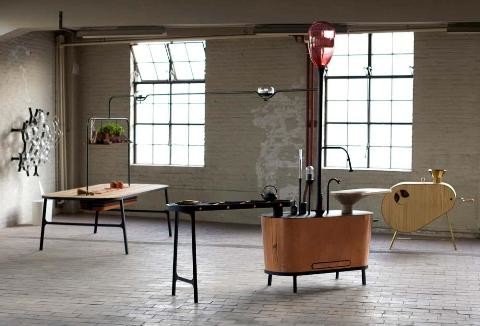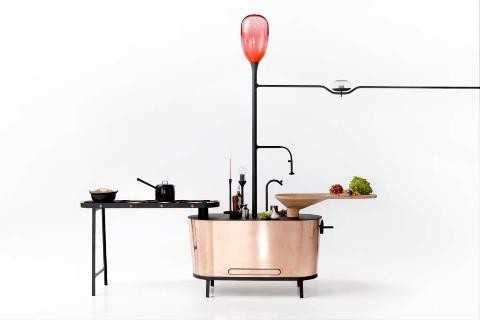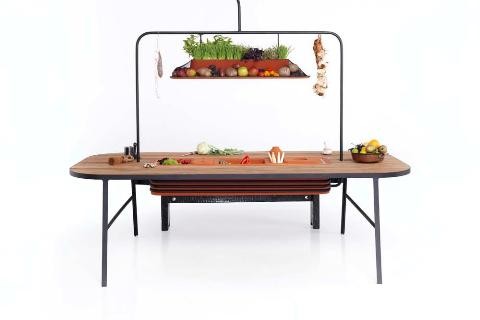Seven new concepts form part of a domestic ecosystem that Philips has created to stimulate discussion about sustainable approaches to the home.
The group of design concepts in ‘Microbial Home’ are meant to represent an innovative and sustainable approach to energy, waste, lighting, food preservation, cleaning and human waste management.

The project is part of the company’s ‘Design Probes’ program, which was established to explore far future lifestyle scenarios based on rigorous research in a wide range of areas.
The projects are intended to help understand future socio-cultural and technological shifts with a view to developing nearer-term scenarios.
Philips describes the project below:
Microbial Home — creating a cyclical ecosystem
The Microbial Home project is a proposal for an integrated cyclical ecosystem where each function’s output is another’s input. In the project, the home has been viewed as a biological machine to filter, process and recycle what we conventionally think of as waste — sewage, effluent, garbage, water waste.
Sustainability — closer to nature
The Microbial Home project suggests that people should move closer to nature and proposes strategies for developing a balanced microbial ecosystem in the home.
“Designers have an obligation to explore solutions which are by nature less energy-consuming and non-polluting,” says Clive van Heerden, senior director of design-led innovation at Philips Design.
“We need to push ourselves to rethink domestic appliances entirely, how homes consume energy and how entire communities can pool resources,” he says.
Microbial Home concepts
Five lifelike models of the concepts (see below and website Philips Design) within the Microbial Home domestic ecosystem are being shown to the public at the Piet Hein Eek gallery during Dutch Design Week (DDW), which runs to 30 October 2011.
The Design Probe projects are part of a wider strategy aimed at improving 'the innovation hit rate'. While it is not intended that design concepts coming out of the Probes program are translated to marketable solutions, insights gained from debate around the concepts feed into future innovation for the company.
Bio-digester kitchen island
Bio-digester kitchen island is the central hub in the Microbial Home system. It consists of a methane digester which converts bathroom waste solids and vegetable trimmings into methane gas that is used to power a series of functions in the home.

Bio-light
Bio-light uses different biological technologies to create ambient light effects. The concept explores the use of bioluminescent bacteria, which are fed with methane and composted material (drawn from the methane digester in the Microbial Home system). Alternatively the cellular light array can be filled with fluorescent proteins that emit different frequencies of light.
Paternoster
Paternoster plastic waste up-cycler uses mycelium to break down plastic packaging waste.
Larder
The Larder concept is a system designed to keep ‘living food’ fresh, by using natural processes (as opposed to dead food in the refrigerator). The larder consists of an evaporative cooler and vegetable storage system built into a dining table.

Urban beehive
Urban beehive is a concept for keeping bees at home. The beehive is designed to allow us a glimpse into the fascinating world of these industrious creatures and to harvest the honey that they produce.


